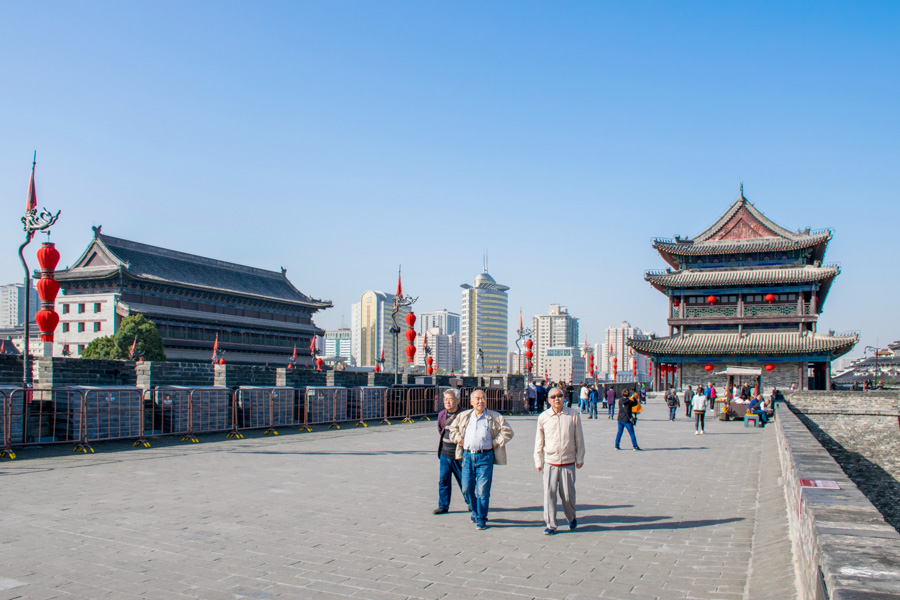Things to Do and Sightseeing Tours in Xi'an
Xi’an is one of China’s oldest cities. It was here that the Silk Road began, linking East and West, and where the fate of an entire empire was decided more than two thousand years ago. Behind the imposing gates of the city wall, you’ll find mosques and pagodas, lively markets, and serene courtyards. Just outside the metropolis, the renowned Terracotta Army and the hot springs of Huacang at the foot of Lishan Mountain await. Every street in Xi’an is steeped in centuries of history, making a walk through the city feel like a journey through China’s past and culture. This Xi’an city travel guide will help you explore the ancient capital in all its diverse beauty, plan an efficient itinerary, and note practical details worth knowing in advance.
Xi’an Tours
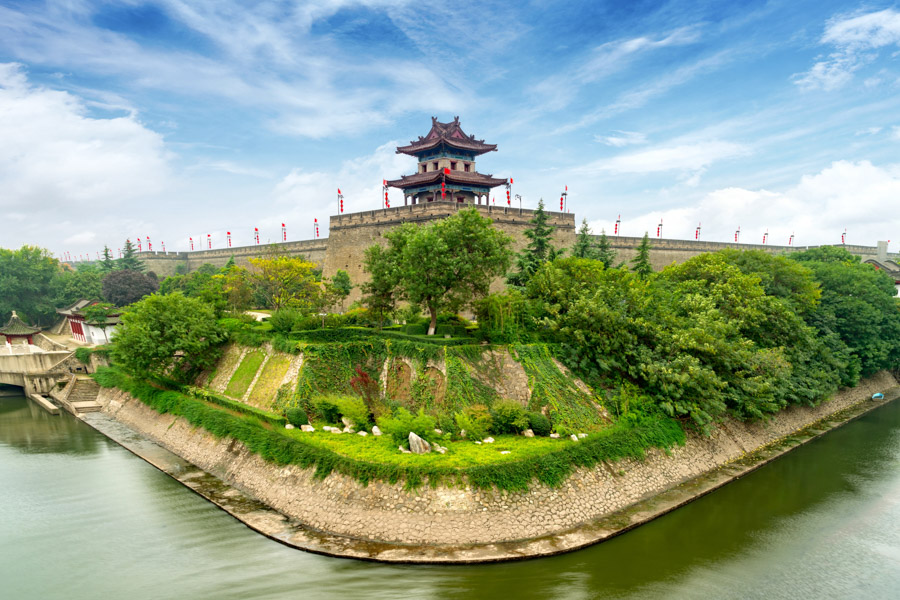
A city of striking contrasts, Xi’an is both an ancient Chinese capital and one of the country’s largest modern metropolises. It welcomes visitors from around the globe with the distinctive charm of its old quarters and the energetic pulse of a thriving city. Xi’an tours offer the chance to explore key historical landmarks and experience the unique spirit of this remarkable place in just a few days.
Classic Xi’an tours introduce travellers to some of the most extraordinary sites in Chinese history. Few sights are as captivating as the vast ranks of the Terracotta Army, the monumental underground force guarding the tomb of China’s first emperor, Qin Shi Huangdi. No less impressive is the City Wall, which still holds the secrets of Old Xi’an. Those drawn to Eastern traditions will enjoy wandering through the vibrant streets of the Muslim Quarter, with its vivid colours, authentic local dishes, and the lively calls of street vendors.
Advantour invites you to join a tour of Xi’an’s most celebrated landmarks and experience the rich atmosphere of China’s ancient capital. Each of our China travel packages promises a deep dive into the many facets of Xi’an’s culture:
Travel through China with Advantour and discover the captivating allure of Xi’an.
Best Time to Visit Xi’an
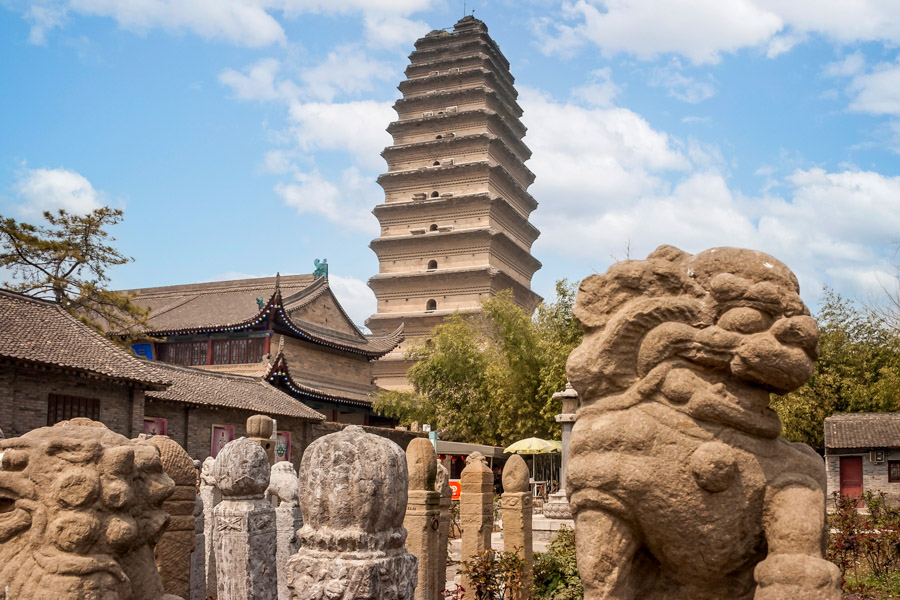
Weather and seasons
The best times to visit Xi’an are spring (April and May) and autumn (September and October). During these months, the weather is pleasantly warm with ample sunshine and little rainfall – perfect for exploring the ancient city and its surrounding sites.
Summer (June to August) in Xi’an is hot and humid, with temperatures often climbing above 35°C (95°F), which can make long excursions challenging. Still, this is also when evening markets come alive and vibrant summer fairs take place. Winter (December to February) is dry and chilly, with temperatures occasionally dropping below zero. However, fewer tourists visit at this time, allowing you to enjoy a tranquil cityscape and views of the snow-dusted city walls.
Festivals and holidays
Travellers interested in Chinese culture and traditions may want to plan their trip around major holidays:
- Chinese New Year (Spring Festival) – Starting on the first day of the first lunar month (January or February), this 15-day celebration concludes with the Lantern Festival. In Xi’an, visitors can enjoy grand parades, dazzling light shows, and festive street fairs.
- Lantern Festival – Held on the 15th day of the lunar New Year, this event transforms Xi’an with colourful light displays and theatrical performances along the city walls. A traditional game called cāi dēngmí (猜灯谜) involves solving riddles, puns, and rebuses written on lanterns or slips of paper.
- Xi’an Ancient Culture Art Festival – Taking place annually in September, this festival features craft exhibitions, traditional workshops, music, and performances celebrating the rich cultural heritage of Xi’an and the Silk Road.
- Dragon Boat Festival – Observed on the fifth day of the fifth lunar month (usually in May or June), the festival includes spirited dragon boat races and feasts featuring traditional zongzi dumplings.
- Mid-Autumn Festival – Celebrated on the 15th day of the eighth lunar month (September or October), when Xi’an’s streets and squares glow with lanterns. Families and visitors admire the full moon, taste mooncakes (yuebing 月饼), and watch lion and dragon dances.
History of Xi’an
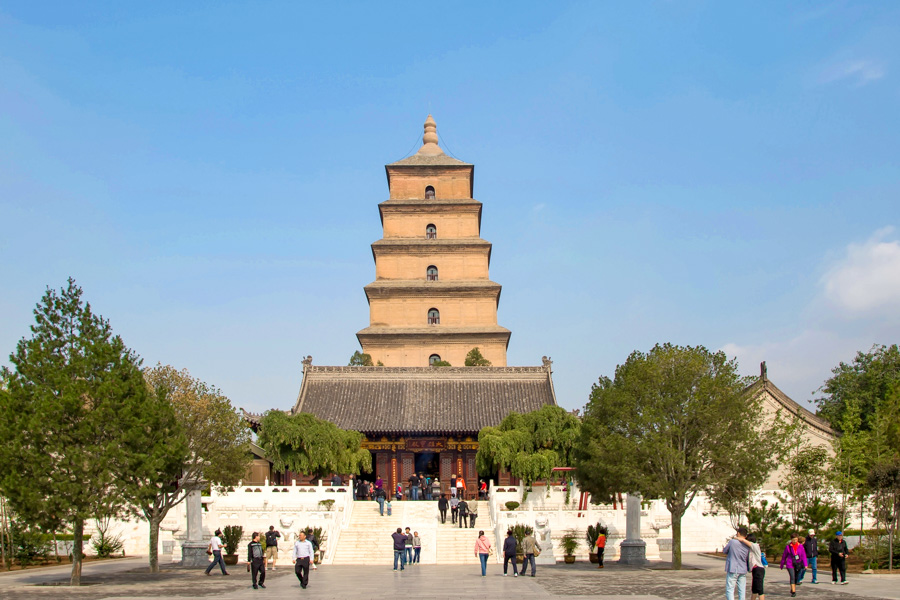
The earliest traces of civilisation
Xi’an’s history stretches back thousands of years, with evidence of human settlement since prehistoric times. Remains of the Lantian Man, estimated to be 500,000 years old, were found near the city. In 1953, archaeologists uncovered the Neolithic village of Banpo (dating back 5,600–6,700 years) on Xi’an’s eastern outskirts, whose inhabitants belonged to the Yangshao culture.
Chang’an – capital of ancient empires
Throughout its long history, the city bore many names, the most renowned being Chang’an (長安, “Eternal Peace”), which became a symbol of Chinese civilisation at its height. For more than a thousand years, it served as the capital during the Zhou, Qin, Han, Sui, and Tang dynasties.
As early as the late 11th to early 8th centuries BC, the Zhou dynasty established its capital here, made up of the twin settlements Fengjing (灃京) and Haojing (鎬京), known collectively as the Fenghao capital cluster. Later, in the 3rd century BC, Emperor Qin Shi Huangdi unified China from Xianyang (咸阳市), just north of modern Xi’an, and began constructing his grand mausoleum guarded by the Terracotta Army.
The Silk Road and the heyday of Chang’an
During the Han dynasty, a new city named Chang’an rose from the ruins of Sanyang, becoming the eastern starting point of the Silk Road – a vast network of trade and cultural routes linking China with Central Asia, Persia, the Middle East, and Europe. Construction of the city wall began in 194 BC and was completed within four years.
The Tang Dynasty – the city's golden age
Chang’an reached its zenith under the Tang Dynasty (7th–10th centuries), emerging as the largest metropolis in the world and a major centre of continental trade. It attracted merchants, pilgrims, scholars, and artisans from India, Persia, the Arab Caliphate, Japan, Korea, and beyond. During this era, the Muslim Quarter took shape, preserving the Hui community’s traditions to this day. Buddhism also flourished, leading to the construction of landmarks such as the Big Wild Goose Pagoda, Small Wild Goose Pagoda, and Green Dragon Temple (Qinglong Temple).
Decline during the Ming Dynasty
Xi’an lost its dominant national status during the Ming Dynasty (1368-1644), yet it was in this period that the City Wall, which still stands today, was built. Earlier fortifications had suffered extensive damage due to warfare and upheaval.
20th century and modern times
In 1911, following the Xinhai Revolution and the fall of the Qing dynasty, Xi’an became part of the Republic of China, serving as the administrative centre of Shaanxi province. In 1936, it was the site of the famous Xi’an Incident, which united nationalists and communists against Japanese aggression.
After the founding of the People’s Republic of China in 1949, Xi’an grew into a key industrial, cultural, and scientific hub in northwestern China. Between the 1950s and 1980s, the city saw the development of heavy industry, defence and aerospace enterprises, universities, and research institutes. In recent decades, Xi’an has embraced modernisation, becoming a major transportation centre and a popular destination for travellers.
Things to Do in Xi’an
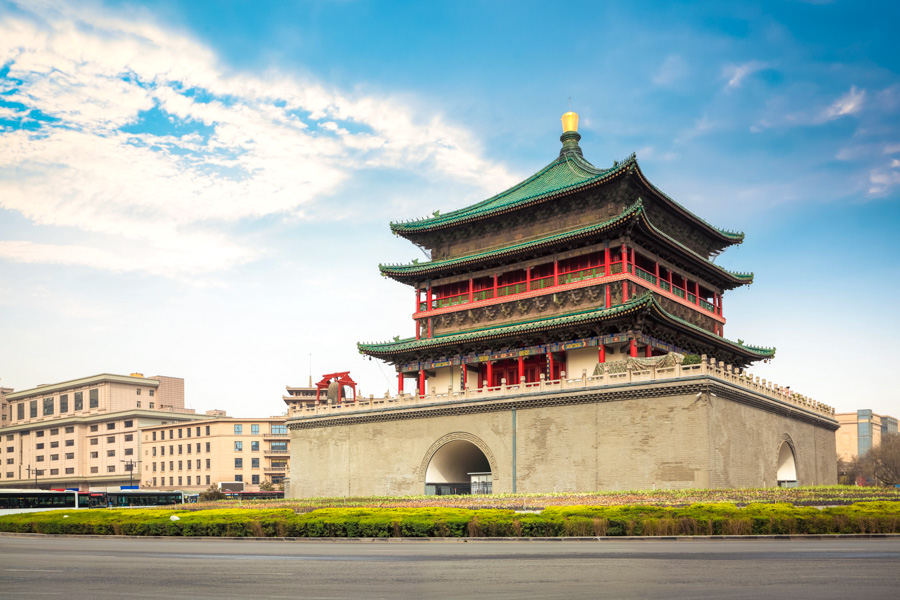
Places to Visit in Xi’an
Xi’an invites travellers to explore China’s unique culture and remarkable history. A journey through this ancient city spans millennia, with each site revealing a new facet of the nation’s rich heritage. Discover the top attractions in Xi’an and let the city share its many stories.
Begin your itinerary in the Old City of Xi’an, encircled by its imposing stone walls. This area draws visitors with atmospheric old quarters, distinctive local cuisine, and striking historical landmarks.
Take in the grandeur of the City Wall of Xi’an (西安城墙), a defining feature of the city built six centuries ago during the Ming Dynasty. As the main fortification of the ancient capital, it impressed with its scale: walls reaching 12 metres (39.37 feet) in height, up to 15 to 18 metres (49.21 to 59.06 feet) wide, and lined with 98 watchtowers. Today, the City Wall is a favourite spot for tourists, where panoramic views stretch across old and new Xi’an. You can walk, cycle, or ride an electric shuttle along its length. It is especially enchanting in the evening when the city glows with thousands of lights.
Explore the Muslim Quarter, a vibrant district dating back to the 7th-8th centuries, originally founded by Arab and Persian merchants travelling the Silk Road. Today, it remains the heart of Xi’an’s Hui Muslim community and one of its liveliest areas. Wander narrow lanes lined with traditional architecture, browse spice and souvenir stalls, and sample local street food: charcoal-grilled meats, sweets, hearty soups, and stuffed flatbreads. Beiyuanmen Street is particularly lively, with countless food stalls and restaurants where you can taste the flavours of Shaanxi province and Xi’an’s Muslim culinary specialities.
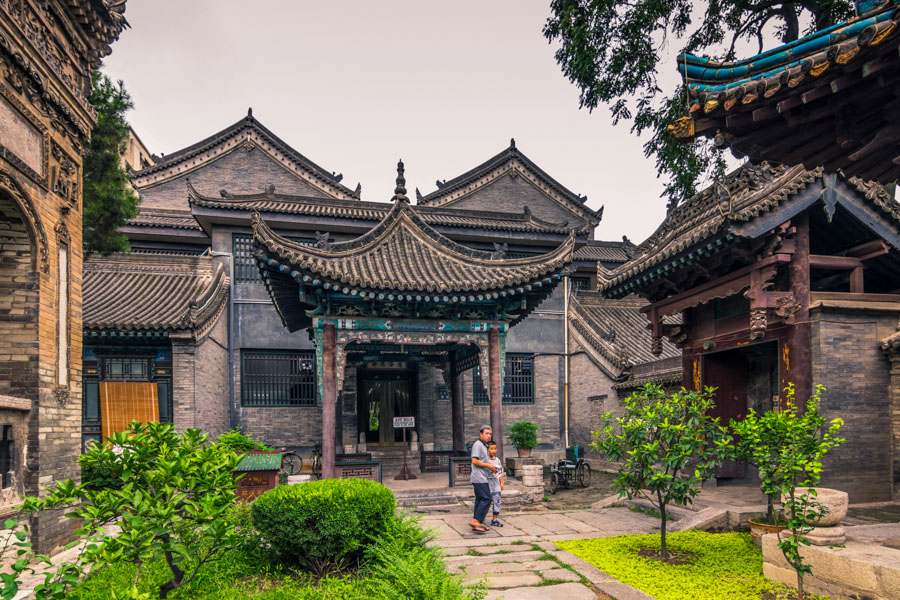
Visit the Great Mosque of Xi’an (西安清真大寺), the main religious and cultural landmark of the Muslim Quarter. The Great Mosque was established in 742 and founded by naval admiral Zheng He, hailing from a distinguished Muslim family, who is renowned for his efforts in eliminating pirates from the Strait of Malacca. The mosque took on its present form in the 14th century. Its complex features include five inner courtyards with wooden pagodas, while the prayer hall interiors are adorned with intricate patterns from the Ming and Qing dynasties. The mosque bears a resemblance to a Buddhist temple. Listed as a national monument, it remains the primary centre of worship for Xi’an’s Muslim community.
A stroll through Old Xi’an also reveals other important sights:
- Bell Tower (西安钟楼)–the city’s “clock tower”, one of the largest towers of this type in China, built in 1384, now home to a museum showcasing a massive bell and ancient manuscripts. The tower is more impressive, especially in the evening when it is illuminated with colourful lights.
- Drum Tower (西安鼓楼)–once the “night clock”, where drums marked the hours after dark. Today, it displays large drums and antique furnishings and hosts a musical performance each evening.
- Temple of the Eight Immortals (八仙) –the largest and only active Taoist temple in Xi’an, built during the Song dynasty, noted for its stone slabs engraved with ancient Taoist texts and symbols, is dedicated to a group of eight legendary heroes. The Immortals are Cao Guojiu (曹國舅), Han Xiangzi (韓湘子), He Xiangu (何仙姑), the only woman of the eight heroes, Lan Caihe (藍采和), Li Tieguai (李鐵拐), Lü Dongbin (呂洞賓), Zhang Guolao (張果老), and Zhongli Quan (鍾離權).
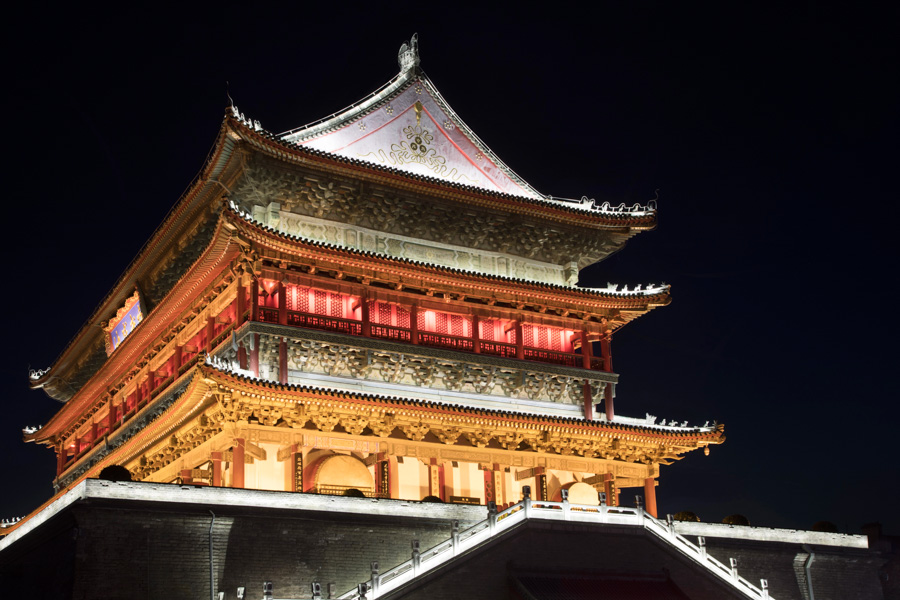
Beyond the old district within the city walls, Xi’an is famed for its major landmarks located approximately 40 kilometres (25 miles) east of Xi'an city:
The Mausoleum of Qin Shi Huang (秦始皇陵) is the burial site of Qin Shi Huang (259-210 BC), the first emperor of unified China in the 3rd century BC. The mausoleum remains mostly sealed due to concerns among archaeologists that opening the tomb could lead to irreparable damage to its valuable artefacts. Furthermore, the tomb is said to be surrounded by rivers of mercury, which adds a risk of potential toxicity to the underground site. At its heart stands a 50-metre-high earthen mound, beneath which, according to ancient records, lies an enormous underground palace. Hundreds of graves of court officials and close attendants are clustered around the mound, forming a vast necropolis.
The Terracotta Army (秦始皇兵马俑) is the most celebrated part of this complex. Excavations have uncovered more than 8,000 life-sized soldiers and about 600 horses across three burial pits. Each figure is unique, with distinct facial features and detailed armour and weapons reflecting rank and type of service. Nearby, in a specially designed museum hall, two bronze chariots discovered close to the mound are also on display. The Terracotta Army symbolised the emperor’s guard in the afterlife, intended to protect him beyond this world.
Xi’an Museums
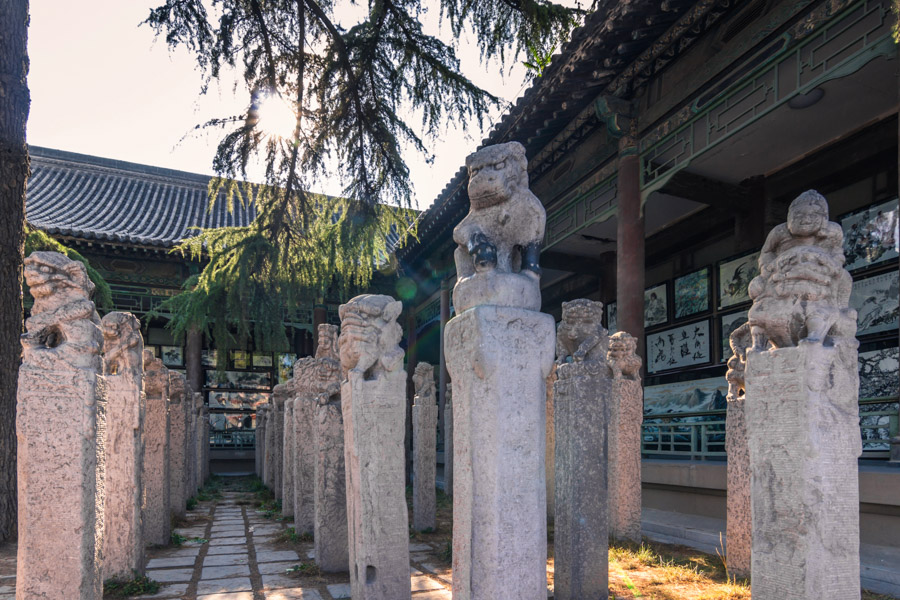
Xi’an’s museums give visitors a deeper understanding of the city’s remarkable past. Through rare artefacts, masterful works of art, and treasures from the Silk Road, they reveal new perspectives on the history of Xi’an and Chinese civilisation as a whole. Don’t miss these highlights:
Forest of Stone Steles (西安碑林) – a celebrated archive of Chinese writing and calligraphy hosted in a temple. Its first exhibits included 114 steles inscribed with the “Twelve Canons” of Confucianism, carved in stone long before the invention of printing. Among its 3000 most prized pieces is the Nestorian Stele from 781, which recounts the arrival of Christian missionaries in China via the Great Silk Road.
Shaanxi History Museum (陕西历史博物馆) – one of China’s largest museums, inaugurated in Xi’an in 1991. Spanning 65,000 square metres, it holds over 1.7 million pieces (sets) of artefacts, ranging from more than one million years to the present, that illuminate the long history of Shaanxi Province, the heartland of ancient Chinese civilisation. The extensive collection features bronze wares, household items, jewellery, weapons, terracotta figures, and fine ceramics. Dedicated galleries explore the culture and daily life of the province. Noteworthy exhibits include the remains of the Lantian Man, the jade seal of the first Han emperor, and mural paintings from imperial tombs.
Xi’an Theatres
Xi’an is home to several major theatres that showcase a rich array of performances, from classical opera and traditional Chinese theatre to folk art and modern concerts:
Shaanxi Grand Theatre (陕西大剧院) – a large, contemporary opera and drama venue featuring a 2,000-seat auditorium.
Xi’an Concert Hall (西安音乐厅) – an elegant hall designed for symphonies and chamber music, with seating for around 1,300 guests.
Xi’an Qin Opera Theatre (西安秦腔剧院) – a cultural hub dedicated to performances of Qin opera, the region’s distinctive traditional folk art form.
Xi’an Yisu Grand Theatre (西安易俗大剧院) – the city’s oldest theatre, specialising in traditional Chinese stage productions, with space for up to 1,161 visitors.
Shaanxi Broadcasting & Television Grand Theatre (陕西广电大剧院) – a modern multi-hall complex with more than 1,000 seats, frequently hosting concerts, festivals, and other large-scale events.
Vicinity and Beyond Xi’an
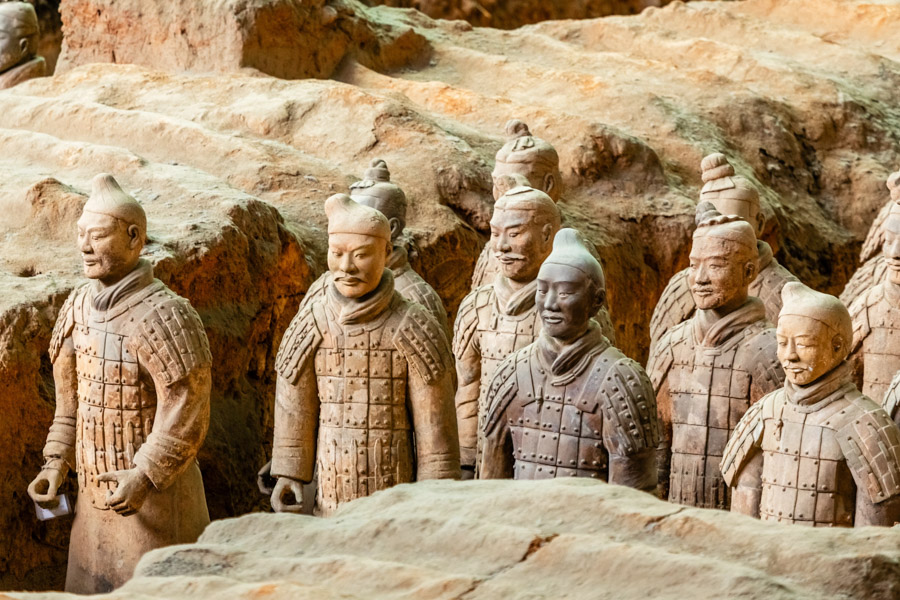
Beyond Xi’an, equally impressive sites await discovery: sacred mountains, ancient mausoleums, hot springs, and scenic landscapes. A trip into the surroundings of Xi’an offers a chance to step away from the city’s bustle, appreciate the beauty of nature, and uncover new chapters in the region’s history. Here are some notable places to visit outside Xi’an:
Epang Palace or Afang Palace (阿房宫) – the palace of Qin Shi Huang, the first emperor of a unified China. Built in 212 BC and located 15 kilometres (9 miles) west of Xi'an city. Almost none of the original structures have survived. From 1995, the palace was reconstructed on its historic site, guided by ancient texts and illustrations, and in 2000 the site was opened to the public. Visitors today can explore restored halls, altars, bridges, terraces, and galleries. Daily historical performances are staged here, with festivals and fireworks held on special occasions.
Banpo (半坡) is a Neolithic settlement of the Yangshao culture, over 6,000 years old. This village, located about 7 kilometres (approximately 4.3 miles) east of Xi'an city, stretched across about 50,000 square metres (538,196 square feet) and was protected by a moat and rampart to keep wild animals at bay. Its residents lived a settled life, hunting, fishing, and farming. Archaeologists uncovered a cemetery with 250 burials and a pottery workshop here. In 1958, the Banpo Museum opened on the site, displaying around 10,000 artefacts, including pottery, tools of bone and stone, statues, and ritual objects.
Huaqing Hot Springs (华清池) lie at the foot of Lishan Mountain, about 30 kilometres (18.6 miles) east of Xi’an. The complex features ancient baths, pavilions, ponds, and gardens artfully set into the mountain landscape. Here you can see restored palace halls from the Tang Dynasty, along with sculptures and memorials dedicated to the legendary romance of Emperor Xuanzong of Tang and his concubine Yang Guifei.
Maoling Tomb (汉茂陵) is the grandest mausoleum of the Han dynasty, built for Emperor Wu Di, who ruled in the 2nd-1st centuries BC. Its massive mound, rising about 50 metres, dominates the surrounding plain. The site, located 40 kilometres (24.85 miles) to the west of Xi'an, is encircled by dozens of smaller tombs belonging to imperial family members, high officials, and military leaders. Within the complex, stone steles, sculptures, and bas-reliefs of mythical creatures have endured through the centuries.
Yanling Mausoleum of Han (汉阳陵) ranks among the largest burial complexes near Xi’an, constructed for Emperor Jing of Han (156–141 BCE) and his empress. Located 20 kilometres (12.43 miles) from the city, it spans roughly 12 square kilometres (4.64 square miles). Besides the imperial couple, dignitaries, consorts, and servants were also laid to rest here. The central tombs remain unsealed, but archaeologists have explored 86 surrounding tunnels, discovering hundreds of ceramic figurines of warriors, servants, animals, and everyday items. The highlight of the exhibit is the Yangjiawan terracotta army: miniature warriors just over a metre tall, reminiscent of the famed Terracotta Army of Qin Shi Huang. In 1999, a museum opened on the site, featuring multimedia displays that bring scenes from the Han dynasty to life.
Entertainment, Parks, and Shopping in Xi’an
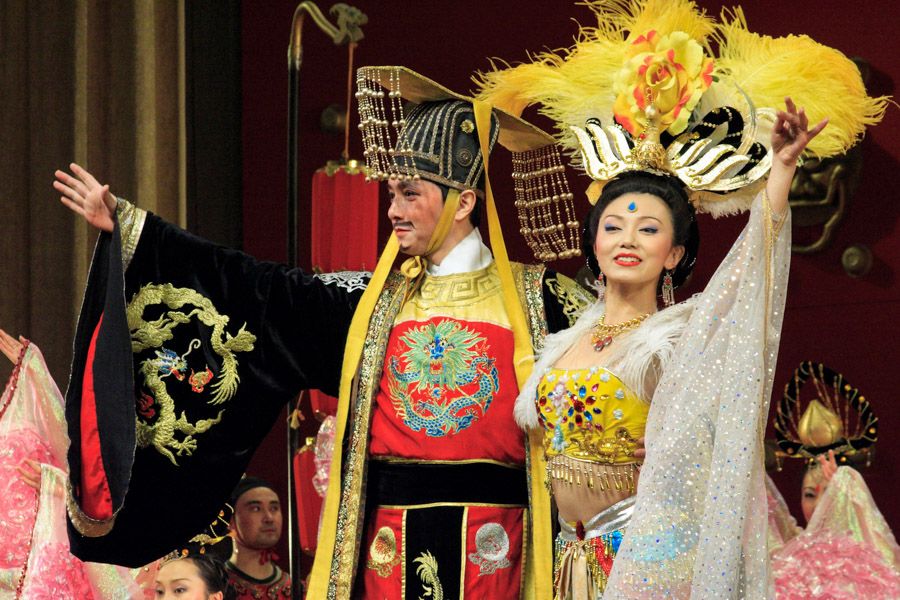
Entertainment
Xi’an has a wealth of entertainment options that capture the spirit of the city and provide lively insights into local culture.
Artistic performances and shows
Among Xi’an’s top cultural attractions is the dazzling Xi’an Tang Dynasty Show, held at Tang Dynasty Xi’an, the city’s premier cultural and entertainment theatre-restaurant. Audiences are treated to live music, graceful dances, elaborate costumes, and stage designs that evoke the golden age of Chang’an. Guests may also opt to enjoy the performance as part of an elegant dinner featuring a wide array of dishes. Informational brochures about the show are available in English, German, Spanish, Italian, and French.
Another vivid production, The Legend of Camel Bell, is a large-scale musical and dance spectacle that narrates the story of the Silk Road. Designed to engage viewers of all ages, the show impresses with its precise choreography, striking costumes, and carefully crafted sets.
Cultural Nightlife Destinations
Night markets and culinary walks – When evening falls, Xi’an transforms into a sensory feast: streets fill with the scent of spices, smoke curls from grills, and the glow of colourful lanterns. Bustling Beiyuanmen Street or the quieter lanes of Shuyuanmen are perfect for sampling local specialities. Taste freshly baked flatbreads, delicate nut pastries, lamb kebabs, and honey sweets as you wander among stalls where locals and tourists alike shop for spices, snacks, and handcrafted souvenirs.
Vibrant Nightlife Establishments – After dark, Xi’an reveals a different energy: neon lights beckon from bars and karaoke clubs around the Bell Tower. Here, you can spend the night enjoying cocktails with friends or meeting new people, surrounded by the vibrant pulse of the city.
Active leisure
Morning in Xi’an’s parks brings gentle music and the soft rustle of fans as residents gather to practise tai chi or learn folk dances. Visitors are welcome to join in, mirroring the graceful movements, or simply watch and savour the calm of early day. Later, head to the City Wall for a stroll along its ancient ramparts or rent a bike to circle the perimeter, pausing to photograph city gates and sweeping views of the neighbourhoods.
Parks in Xi’an
Parks in Xi’an are peaceful green retreats where you can step away from the city’s bustle and glimpse the everyday life of local residents. In the mornings, people gather to practise tai chi or dance, while evenings see families strolling and relaxing on the lawns. Here are some of the most beautiful and inviting green spaces in Xi’an:
Tang Paradise, also known as Tang Dynasty Lotus Garden (大唐芙蓉园), is a scenic urban park celebrated for its ponds filled with lotus and water lilies, which are especially striking during the bloom from June to August. The park spans a broad green area dotted with gazebos, stone bridges, walking paths, and secluded spots perfect for rest.
Qujiang Ruins Park is considered the first large-scale heritage park in northwest China to combine historical and cultural preservation with ecological landscaping, leisure, and tourism. It recreates the historical scenery of the Qujiang area, once known for its dense greenery and interlacing waterways. Today, it is a tranquil landscape of ponds, bridges, pavilions, and charming embankments. Visitors can stroll by the water, enjoy a picnic, or take a leisurely boat ride.
Lishan National Forest Park (驪山國家森林公園), east of Xi’an near the Huaqing Hot Springs, features picturesque mountain slopes covered with dense forests, scenic trails, and historical landmarks. Within the park, you’ll find a statue of Emperor Xuanzong of Tang, stone staircases, pagodas, and viewpoints with sweeping vistas of Xi’an and the Guanzhong Plain.
Shopping in Xi’an
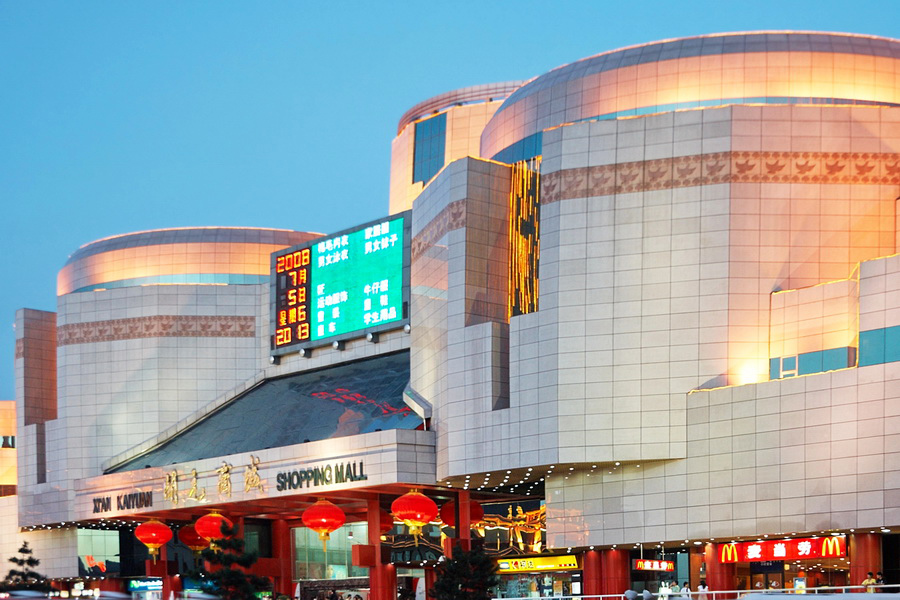
Shopping in Xi’an is one of the most engaging ways to experience the city’s craft traditions and lively atmosphere, from ancient markets to modern shopping districts. In this city, once the starting point of the Silk Road, every stall seems to invite you to trace the footsteps of history. Below are some of the most captivating places where visitors are sure to find memorable treasures.
Beiyuanmen Street (北院门) is a paradise for lovers of street food and authentic souvenirs. Traditional items here include shadow puppets, embroidered wallets, silver jewellery, fans, hand-painted porcelain, and fabric and metal crafts. Spices, dried fruits, and rose petal jam also make wonderful edible gifts.
Location: near the Drum Tower
Zhuque Antiques Market (古玩城) is the largest antique market in Xi’an, attracting collectors, from around the world in search of rare finds. Popular pieces range from paintings and calligraphy scrolls to bronze ware, jade jewellery, Tang dynasty sancai ceramics, and clay figures modelled after the Terracotta Army. You’ll also come across silk carpets, wool blankets, porcelain vases, and examples of cloisonné enamel from different dynasties.
Location: at the intersection of Zhuque Street and South Second Ring Road
Tang West Market (大唐西市) is a modern international shopping area built on the site of a grand market from the Tang Dynasty, once a crossroads for global trade. Replicas of terracotta warriors are among the most sought-after souvenirs here, along with colourful sancai glazed figurines of people, horses, and camels. Its most renowned places are the Silk Road Shopping Street, which is a paradise for antique collectors and the International Shopping Center, which hosts famous international brands. Visitors can also explore the Tang West Market Museum, which exhibits cultural relics unearthed from the ancient bazaar.
Location: Laodong Street
Shu Yuan Men Street (书院门) is a charming traditional-style street behind the Forest of Stone Steles Museum, buzzing with activity year-round. Set along lanes lined with Ming and Qing dynasty-style houses are over a hundred shops filled with handmade treasures that reflect the depth of Chinese craftsmanship. Find calligraphy scrolls, paintings, Chinese brushes, painted fans, stone seals, and rare musical instruments like the spherical Xun flute or Hulusi mouth organ. You can even order personalised seals crafted to your own design, typically priced between 25 and 60 yuan.
Location: east side of the South Gate, Shuyuan Gate, Beilin District
Kaiyuan Shopping Mall (开元商城) is a vast modern complex in the heart of the Old Town. Across its seven floors are stores selling clothing, shoes, accessories, cosmetics, electronics, home décor, musical instruments, and more. The fifth floor features two observation decks with views over the Bell Tower and Drum Tower.
Location: 6 Jiefang Market, East Street, between Dongda Street and Nanda Street, near the Bell Tower
Food in Xi’an
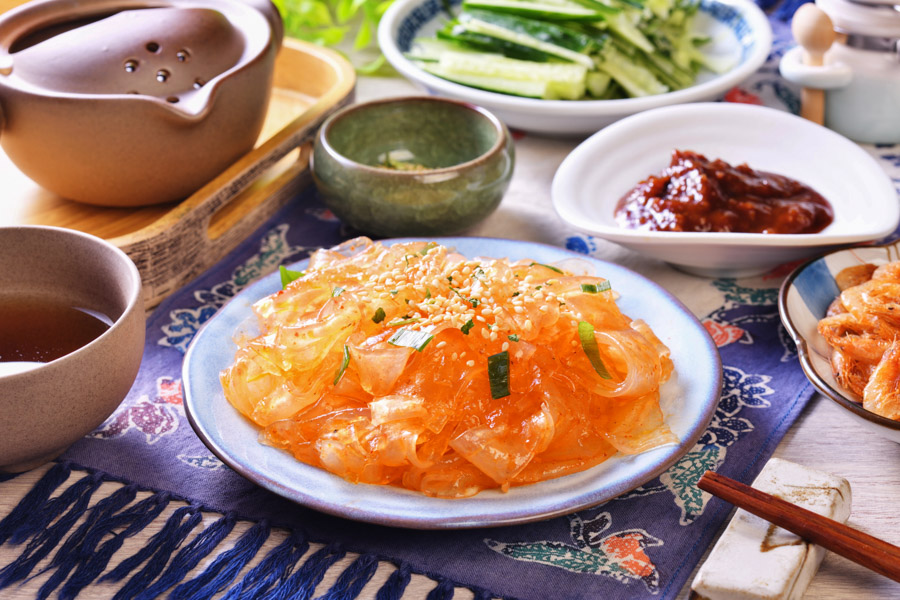
Xi’an’s culinary traditions are a testament to the city’s long, storied past. Here, the robust flavours of northern China blend with hints of Central Asia, creating a remarkable tapestry of tastes. This hearty, aromatic cuisine beautifully complements the ancient streets and vibrant atmosphere of the old city.
Chinese Cuisine
Begin your culinary adventure with biángbiáng miàn, long, wide wheat noodles topped with a thick sauce of soybeans, fragrant chilli, and fresh garlic that infuses the firm noodles with a deep, spicy warmth and a hint of sweetness. Fresh herbs and crisp pickled vegetables add vivid colour and bright notes. It’s a comforting dish, perfect for chilly days.
Equally popular is liangpi, Xi’an’s signature cold noodle dish made from rice or wheat, tossed in a zesty vinegar and garlic sauce with aromatic sesame oil. Refreshing and light, it’s an ideal choice for hot summer afternoons, easily found at street stalls and small local restaurants.
For something heartier, try ròujiāmó, tender stewed pork or beef tucked inside a slightly crispy wheat flatbread. This is one of Xi’an’s most iconic street foods, served everywhere from humble stalls to bustling restaurants.
Broth lovers shouldn’t miss yángròu pào mó, a rich mutton broth into which diners crumble pieces of dense, unleavened bread. Served steaming hot with marinated garlic and spicy condiments, it’s especially satisfying in cooler weather. This dish is a highlight of the Muslim Quarter and well worth seeking out there.
For a quick snack, sample spicy lamb or chicken skewers grilled over open flames. Generously seasoned with cumin, chilli, black pepper, and salt, they deliver a savoury heat with a gentle kick and aromatic depth.
Traditional Chinese Restaurants

While exploring Xi’an’s historic neighbourhoods, travellers can enjoy authentic Chinese cuisine in local restaurants. Many of these places serve regional specialities in a setting that reflects the city’s rich culinary traditions. Some of the most popular venues are located in and around the Muslim Quarter:
Lao Sunjia Red Meat Shredded Pancake (老孙家牛羊肉泡馍) is a modest eatery with a wide-ranging menu and an authentic local feel. Here you can sample many of the neighbourhood’s favourite specialities, including rich lamb broth, vegetable noodles, skewered meats, dumplings with assorted fillings, and more.
Lao Mi Jia Pao Mo (老米家泡馍) is especially beloved by Xi’an locals. Its simple wooden tables are always bustling with diners. The highlight here is the renowned Lao Mi Jia Pao Mo soup – a fragrant meat broth infused with spices and herbs, served alongside traditional flatbread, tender beef, stewed mushrooms, and glass noodles.
Fanji Braised Meat In Preserved Sauce (樊记腊汁肉) is a classic establishment best known for its signature roujiamo, the hearty Chinese “burger” filled with slow-stewed meat in soft, lightly browned flatbread. The menu also offers filling noodle soups and fried rice with vegetables, eggs, and fresh herbs – simple dishes prepared with perfect balance. With its spacious dining room, the restaurant easily accommodates large groups, while the attentive staff ensures quick, efficient service.
Vegetarian Restaurants
Thanks to its cultural diversity and strong Buddhist traditions, Xi’an is home to a rich array of options for those who prefer vegetarian dining.
Tian Long Bao Yan Vegetarian Restaurant is an inviting spot known for its extensive menu of vegetarian dishes. The preparations are so skilful they could easily be mistaken for meat-based dishes, yet diners can be confident that only plant ingredients are used. Menus are fully translated into English, ensuring a worry-free experience.
De Fa Chang, a renowned restaurant near the Drum Tower, specialises in dumplings. Guests can sample dozens of varieties with an array of fillings, including vegetable, soy-based, poultry, and seafood options. Vegetarians will find plenty to enjoy, from delicate dumplings to hearty noodle and bean dishes made entirely without animal products.
Delhi Darbar offers authentic Indian cuisine in a cosy setting adorned with oriental décor. Its menu features dozens of purely vegetarian dishes crafted from classic recipes. Fragrant spices enhance, rather than overpower, the natural flavours of the ingredients, keeping the heat balanced. A satisfying lunch or dinner can be finished off with a sweet dessert or a creamy milkshake.
Tea Houses, Bakeries, and Patisseries
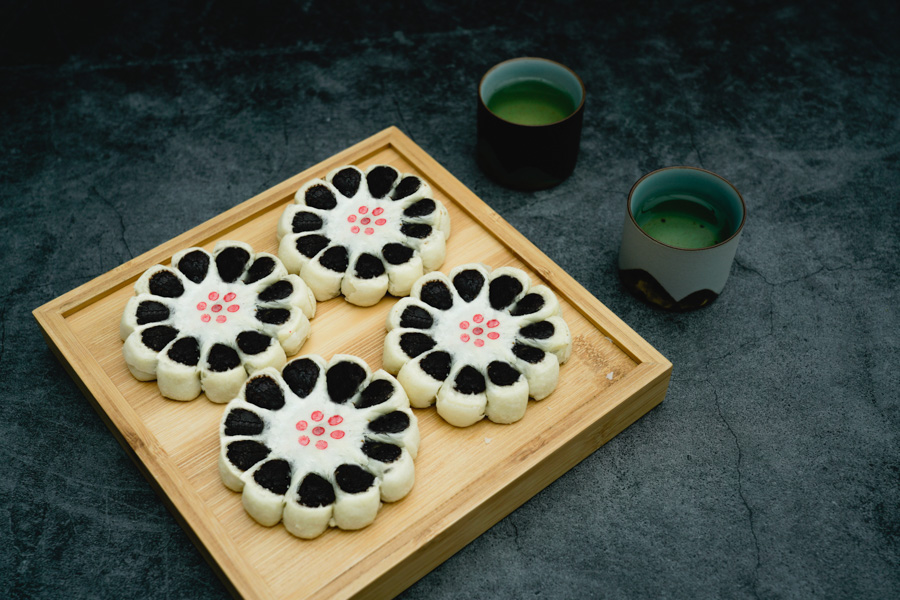
While exploring the authentic Muslim Quarter and other popular sites in Old Xi’an, be sure to try the local sweets and beverages sold by street vendors.
One of the most tempting options is jujube cakes – delicate steamed pastries topped with a rich layer of Chinese date paste. Their flavour blends a gentle spiciness with caramel and fruity notes. The chewy, moderately sweet filling paired with the light, airy dough makes them an ideal dessert after a hearty meal.
In autumn, you can sample Shìzi bǐng (柿子饼) at the bustling Muslim Bazaar – golden persimmon cakes with a crisp exterior and a soft, flavourful centre. Made from fresh persimmon pulp mixed with rice or wheat flour, they carry a light fruity aroma and natural sweetness, making them a perfect snack to enjoy on the go.
Another must-try is zeng gao, a delicate rice cake made from sticky rice steamed with a filling of sweet red beans and soft, caramel-infused dates. Warm, slightly chewy, and naturally sweet, it’s the perfect way to finish a meal or enjoy on its own with a cup of hot tea.
Among the drinks, bing tang xue li (冰糖雪梨) stands out – a pear-based lemonade cherished by many in northern China. For a hint of caramel, try the version made with brown sugar instead of white. Another favourite is suan nai (酸奶), a tangy yoghurt drink traditionally sold in white 220 ml jars. Its delicate sweet-and-sour flavour is both invigorating and refreshing, even during the height of summer heat.
These desserts and beverages are easy to find along the bustling streets of the Muslim Quarter. There is no need to step into restaurants or pore over menus – tempting sweets and distinctive drinks await you at nearly every corner, offered by welcoming street vendors.
City Transport in Xi’an
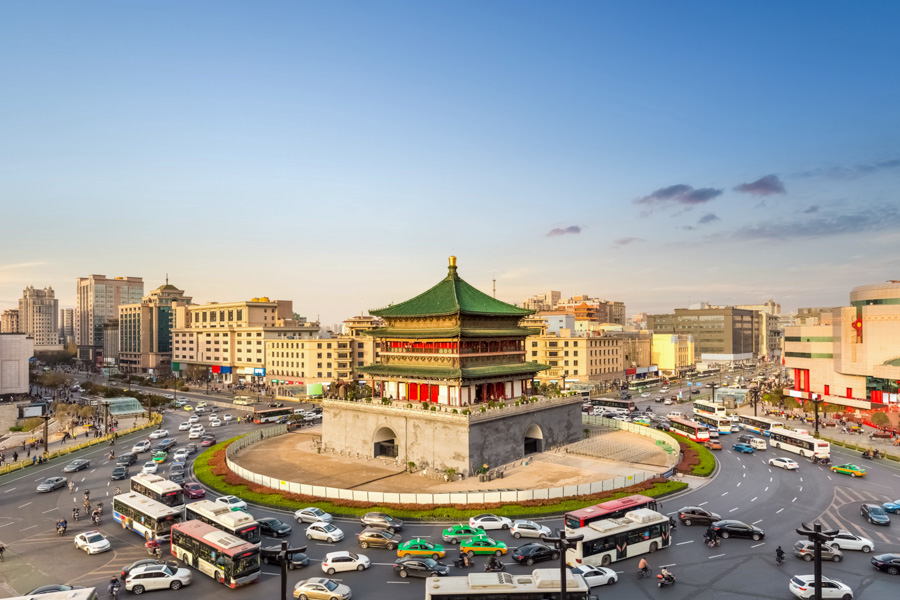
The transport infrastructure in Xi’an makes it easy to move between different parts of the city. Both residents and visitors rely on a mix of public transport options – metro and buses – as well as taxis and bike rental systems. Public transit is convenient and user-friendly for tourists: metro and train stations feature maps with English signage, and taxi drivers are familiar with all major attractions.
Metro
The Xi’an Metro has 11 lines and 270 stations, connecting the main areas of the city.
Features:
- Tickets can be bought at ticket offices and machines in every station or via the Xi’an Metro mobile app, available for iOS and Android with English support.
- Travellers planning multiple rides over a few days can purchase a multi-trip pass (Xi’an Metro Travel Card) valid for a week or a month.
- Fares can be paid in cash (Chinese yuan) at ticket counters and machines or electronically using WeChat Pay and Alipay.
- Groups can purchase discounted group tickets.
Children under 6 years old and under 1.3 metres (4.2 feet) tall ride free.

Buses
Buses are one of the most affordable ways to get around Xi’an, with a fleet of over 7,800 buses serving around 500 official routes.
Features:
- Hours: In the city centre, buses generally start running around 6:00 to 6:30 a.m. and continue until 7:30 to 11:00 p.m., depending on the line.
- Fares: Most routes have fixed rates – 1 CNY/RMB for standard buses and 2 CNY/RMB for air-conditioned buses. Some suburban routes use distance-based pricing.
- Not all stops have English names, so tourists should know their destination in Chinese or use apps like Gaode Map or Baidu.
- Fares are paid in small cash when boarding.
- Tourist buses link the main attractions within the city and suburbs.
- Expect buses to be very crowded on weekdays from 7:30 to 8:30 a.m. And 5:30 to 7:30 p.m., as well as on weekends.
Taxis
Taxis in Xi’an run 24 hours a day and are easy to identify: most are green with a yellow stripe, and others are yellow or blue with a white stripe, while black taxis – slightly more expensive – operate mainly between the city and the airport. You can hail a taxi on the street or find one at stands near stations, tourist sites, and the airport. Mobile apps like Didi and Caocao also make it simple to book a ride.
Important to know:
- Drivers rarely speak English, so it’s best to have your address written in Chinese.
- During rush hours (7:30–8:30 a.m. and 5:30–7:00 p.m.), finding a taxi can take longer, so allow extra time.
- Payment is made in cash or via WeChat Pay and Alipay; bank cards aren’t accepted.
- Booking a taxi in advance, including airport transfers, allows you to lock in a fixed rate.
Car rental
Renting a car independently in China can be an exciting way to explore the country, but it does come with some unique considerations for foreign travellers. Here are a few points to keep in mind:
- International driver’s licences (IDP) are not accepted: Instead, a provisional Chinese driver’s license, also known as the China Provisional Driving Permit (临时机动车驾驶许可), is available for foreigners between 18 and 60 years old visiting China for up to 3 months. It does not require taking a written test and allows you to drive your own car and a rented car in China.
- Language barrier: Road signs, navigation tools, and rental agreements are often available only in Chinese. Therefore, it is always useful to use a GPS app in your own language.
- Unfamiliar driving conditions: China's driving conditions can be quite different from what you may be used to, with heavy traffic, distinctive driving habits, and local regulations to which you will need to get used to.
For travellers who wish to remain mobile in a relaxed way, the most convenient solution is to hire a car with a driver. Many companies provide vehicles with English-speaking drivers, offering an easy option for both airport transfers and day trips in and around the city. This approach ensures comfort and flexibility, allowing you to fully enjoy your journey while benefiting from the expertise of a local driver.
Popular providers include:
- China Car Service
- DelightCar
Both companies offer hourly rentals with a choice of vehicle classes.
Electric transport
Several services in Xi’an rent out electric bicycles and scooters by the minute or hour through mobile apps. Parking areas are easy to spot on city streets, and rentals are unlocked by scanning a QR code. Most platforms accept WeChat Pay and Alipay for payment.
How to Get to Xi’an?
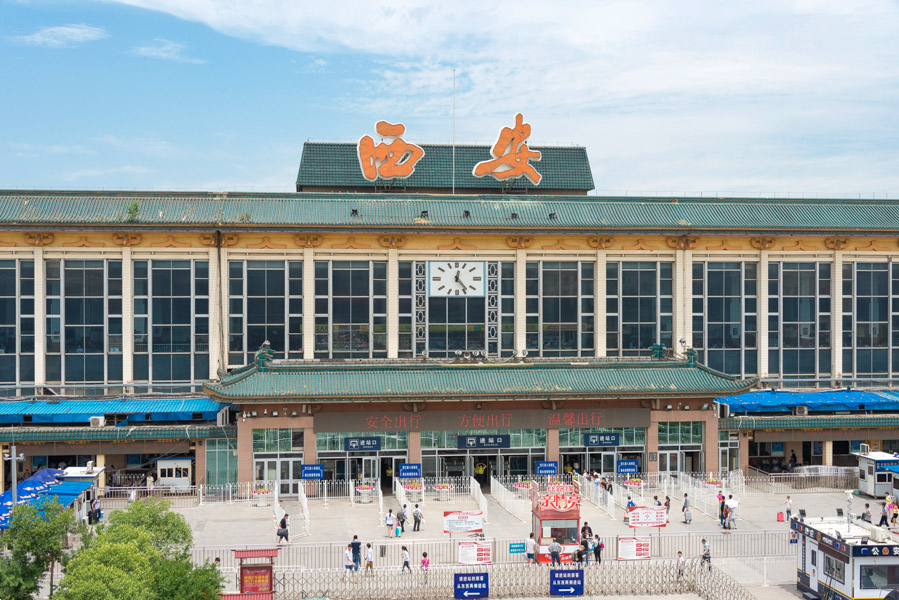
Xi’an is a major transportation hub with excellent domestic links and a number of international connections. You can reach the city by plane or train, including on China’s extensive high-speed rail network.
By plane
Xi’an is served by Xi’an Xianyang International Airport (XIY), about 25 kilometres (16 miles) northwest of the city centre. It offers flights to Beijing, Shanghai, Guangzhou, Chengdu, and Urumqi, as well as Hong Kong, Macau, and destinations in Japan.
To reach the city centre from the airport, take a taxi or one of the shuttle buses. Bus line No. 2 connects the airport with Xi’an Railway Station (not to be confused with Xi’an North Railway Station). Intercity buses to other cities in Shaanxi Province also depart from the airport.
By train
Trains are a convenient and affordable way to travel around China. Xi’an has two main stations:
- Xi’an Railway Station, near the City Wall just north of Jiefang Road, serves regular trains. A separate ticket office for foreign passengers is located on the south side of the station (2nd floor).
- Xi’an North Railway Station, about 10 kilometres (6.21 miles) north of the city centre, is the hub for high speed trains.
High-speed trains link Xi’an with Beijing, Shanghai, Guangzhou, Nanjing, Chengdu, and many other cities. The journey to Beijing takes 4.10 hours to 12.30 hours, while Huashan Mountain can be reached in just 30 minutes to one hour.
Tip: For long-distance travel within China, opt for high-speed trains of categories G and D – they are fast, comfortable, and efficient.
By bus
The main long-distance bus terminal, Shaanxi Province Long-distance Bus Station, is located roughly 100 metres south of Xi’an Railway Station, separated by the City Wall (an underground passage connects them). Buses arriving here come from places such as Huashan (2 to 3 hours), Lanzhou (8 to 10 hours), Luoyang (5 to 7 hours), Taiyuan (12 hours), and Zhengzhou (9 to 12 hours).
Languages Spoken in Xi’an
The main language spoken in Xi’an is Standard Mandarin (Putonghua), used in all official institutions, schools, and tourist areas. At the same time, many locals speak the Guanzhong dialect (关中话) in daily life, a variety common across Shaanxi Province. This dialect belongs to the northwestern group of Mandarin and is characterised by distinctive sounds, vocabulary, and intonations – but it poses no difficulty for speakers of standard Chinese.
A unique linguistic feature can be found in the Muslim Quarter, home to the Hui community. While residents here speak Chinese like the rest of the city, their language includes words borrowed from Arabic and Persian, especially terms related to religion and cuisine.
English is spoken to a limited extent. Staff at large hotels, travel agencies, train stations, and major restaurants usually know basic English, but taxi drivers, market vendors, and street sellers generally do not. Tourists are advised to prepare addresses and attraction names written in Chinese ahead of time.
Currency in Xi’an
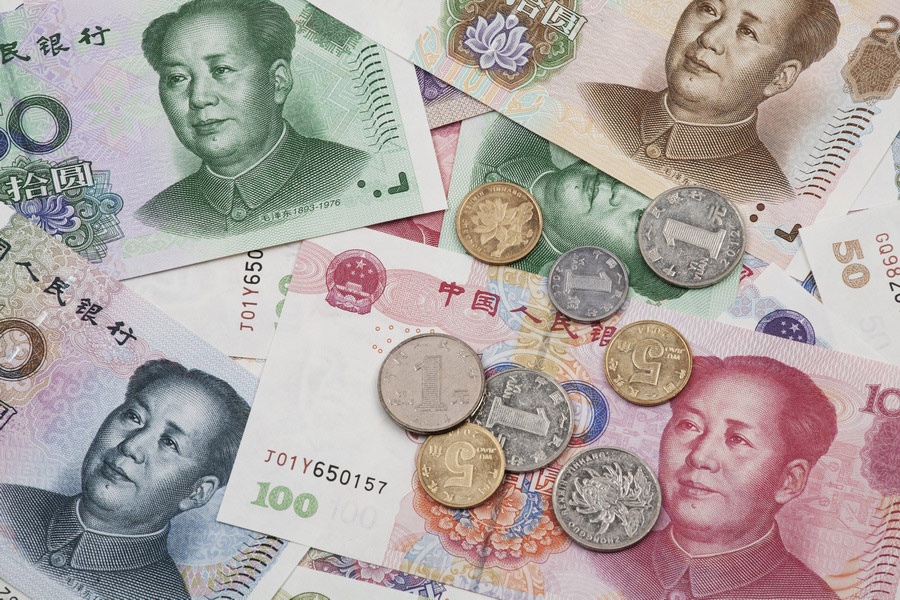
The official currency in Xi’an – as in all of mainland China – is the Chinese yuan (CNY), also known as the Renminbi (RMB). Banknotes come in denominations of 1, 5, 10, 20, 50, and 100 yuan, along with small coins of 1 yuan and 1 or 5 jiao (1 yuan = 10 jiao).
International bank cards (Visa, MasterCard) are widely accepted at large hotels, shopping malls, and many restaurants. However, cash is still essential for markets, small shops, taxis, and street vendors.
For contactless payments in Xi’an, travellers can use the WeChat Pay and Alipay mobile apps. Foreign visitors can link their international credit or debit cards to these platforms and pay at restaurants, shops, transport services, and hotels. The apps are also convenient for ordering taxis, booking hotels, purchasing train tickets, and paying for public transport.
Security in Xi’an
With a population of nearly 13 million and a steady stream of both Chinese and international visitors, Xi’an retains a surprisingly relaxed pace and a low sense of tension. Subway checkpoints, frequent police patrols, and an extensive network of surveillance cameras are not signs of unrest but part of a nationwide system designed to maintain order. For tourists, this creates an atmosphere of predictability and security: even late at night, the streets are lively and well-lit, and the city’s central areas remain safe for walking. Still, there are a few things you should know to feel even safer:
Fraud and petty theft
Pickpocketing can happen in busy markets and on public transport. Keep wallets and phones close and avoid carrying large sums of cash in one place. Around major attractions, you might encounter persistent “helpers” promoting costly tours or questionable souvenirs. It’s best to plan your itinerary and shopping in advance, sticking to official vendors and checking reviews.
Transport and traffic
Traffic in Xi’an is often heavy and can seem chaotic. Be especially cautious when crossing streets, even at green lights, as cyclists and electric scooter riders frequently do not yield to pedestrians.
Police and emergency services
Police patrol tourist areas and can be approached for help. To reach the police, dial 110. For emergency medical services, dial 120.
General recommendations:
- Keep your passport, visa, and valuables in a safe place.
- Carry your hotel address written in Chinese.
- Be cautious when exchanging money in tourist areas – it’s safer to use banks or official exchange offices.
By following these simple precautions, you can feel secure in Xi’an and fully enjoy your trip.


